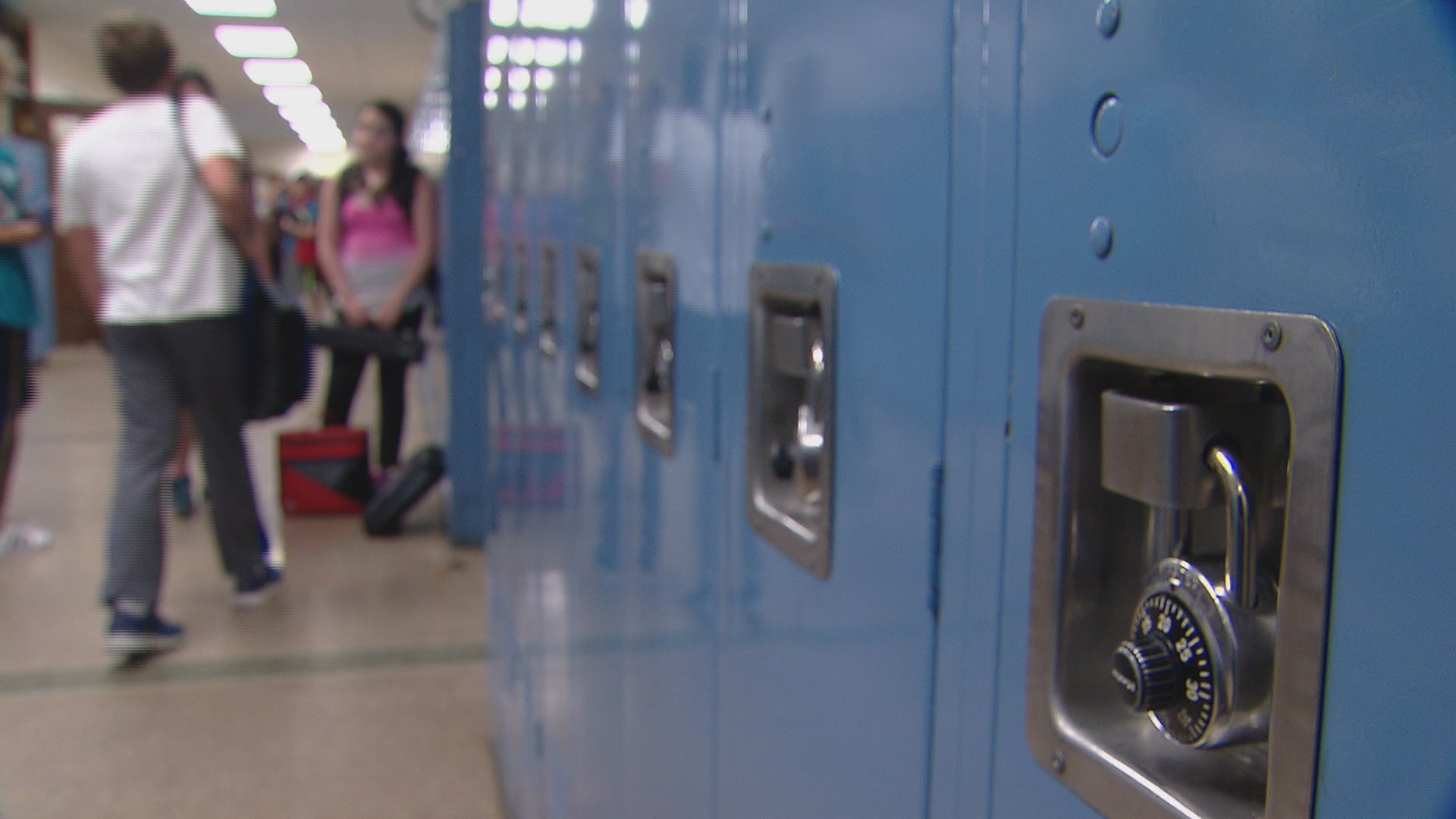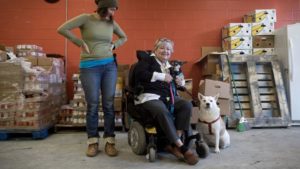When Latesha Holman was homeless, she was a regular in Chicago’s emergency rooms. Sometimes she’d go four times in a single week, battling asthma and a raft of other health problems, though often she just sought refuge from the cold.
Not anymore. Holman, 45, has spent this nasty winter tucked in her cozy basement apartment, kept warm by a space heater, her morning mug of coffee and the joy of babysitting her infant granddaughter.
Her symptoms have improved. Her depression has eased. Her hospital visits — and the high costs they incur — have plunged.
“Since I’ve been here I have never felt this good, really,” Holman said as she sat in her tidy living room, still adorned with a white plastic Christmas tree she bought for the holidays.
Holman owes the roof over her head to University of Illinois Hospital, among a handful of local hospitals starting to invest in permanent housing for chronically homeless patients in order to improve their health and reduce their costly emergency room visits.
Link to video interview of Latesha Holman
The idea is that providing the homeless with stable housing in the long run costs less than leaving them to fend for themselves on the streets, where they are more vulnerable to illness, violence and desperation that ultimately drive up health care costs. U. of I. Hospital, in partnership with the nonprofit Center for Housing and Health, is leading an effort locally to get health care providers to put money toward getting the homeless housed.
“The solution is cheaper than the problem,” said Stephen Brown, director of preventive emergency medicine at the hospital and of its Better Health Through Housing initiative.
U. of I. Hospital, in the Illinois Medical District on the Near West Side, this week announced it will extend a pilot program it launched in 2015, committing an additional $250,000 to place 25 more chronically homeless patients into permanent homes.
While the housing itself, in scattered sites throughout the city and suburbs, is funded by grants from the Department of Housing and Urban Development, the hospital pays $1,000 per month for each patient in the program to cover supportive services, including a case manager who helps participants get on their feet. That’s far less than the $3,000-per-day bill some chronically homeless patients ring up in the ER, the hospital said.
Results from the pilot suggest it is worth the investment. The average monthly health care cost per client in the pilot dropped 18 percent after they were provided with permanent housing, to $4,785 from $5,879, the hospital said.
The individual effort won’t help the hospital’s bottom line, Brown said. But he calculates that if every hospital in the area agrees to help house 10 chronically homeless patients, it could make a major dent in homelessness in the city and save money systemwide.
Cost reduction is not the only motivation for the investment. The core driver is health equity, Brown said, and the recognition that homelessness itself is a dangerous health condition that hospitals should help alleviate.
“If someone came in with cancer, we would do extraordinary things to keep them alive,” Brown said. “The irony is that if someone with a dangerous condition like homelessness comes in, we dismiss them.”
Homeless people are at high risk of pulmonary disease, traumatic brain injury, HIV/AIDS and head and neck cancers, possibly because of higher rates of smoking and alcohol use. Their expected lifespans are 25 years shorter than average, according to some studies.
Most of the major hospital systems in the area, including Northwestern Memorial and University of Chicago Medicine, are at the table on the homeless housing issue, Brown said, and a handful have programs underway.
Swedish Covenant Hospital, in the Ravenswood neighborhood, recently agreed to invest $75,000 to provide 10 chronically homeless patients with permanent housing and support services for a year.
Rush University Medical Center, in the Illinois Medical District, plans to launch a pilot program this spring to provide housing and support services for up to five chronically homeless patients.
Both programs are modeled after the one at U. of I. Hospital and partner with the Center for Housing and Health, a subsidiary of the AIDS Foundation, to identify available apartments via 28 supportive housing providers with HUD grants. Presence Health plans to launch a similar pilot this year.
Separately, the Cook County Health and Hospitals System in August partnered with the nonprofit Housing Forward to connect homeless patients with 33 permanent supportive housing units in west and south suburban Cook County. The system has committed to spending $400,000 for the first 12 months.
“You have to spend money to ultimately save money, or better use the resources you have,” said Mary Sajdak, senior director of integrated care at the county health system. Some homeless patients eager to get out of the cold have gotten good at describing a set of symptoms that they know will land them in a bed for a few days, she said.
Julie Dworkin, director of policy for the Chicago Coalition of the Homeless, said tapping local and private funding sources for housing the homeless is critical given uncertain federal funding.
“There is really great evidence that if you get people into permanent housing and they have intensive support services, that can resolve homelessness for them permanently,” she said.
There were about 5,657 homeless people living on Chicago’s streets or in shelters on a given night last year, according to a city count, down 4 percent from 2016. But most homeless people stay with friends or family, and if you count them the city’s homeless population is upward of 82,200, said Dworkin, whose estimate is based on Census data.
One lesson U. of I. Hospital learned from its pilot is that it sees far more homeless patients than it realized. It initially identified 48 homeless patients in the emergency room, based on staff observations, but as it scrutinized admissions data it found many more people list homeless shelters or hospitals as their home addresses, Brown said.
The hospital now has 616 people in its system who are likely homeless and estimates it has seen more than 3,000 homeless patients since 2010. It reviewed the hospital usage of a sample of homeless patients and found 32 percent were in the highest cost classification, which means their care cost seven to 70 times more than the typical patient.
While many are sick, and their health problems are exacerbated by homelessness, those just seeking warmth are getting the priciest bed in town. It costs about $1,500 a night for a bed in the emergency room, Brown said.
“If we got them a place in the Four Seasons, it would be cheaper,” he said.
While most of the patients invited to participate in the housing program are “superutilizers” — meaning they visit the emergency room more than eight times are year — that’s not the only criteria. A team that includes staff from the ER, social work, psychiatry, oncology and other departments convenes to discuss which patients’ health would be most helped by having housing, such as those with multiple diseases that require frequent outpatient visits.
All participants must meet HUD’s definition of being chronically homeless, which means they have been homeless for at least a year or on four separate occasions over the last three years.
Picking the right people to thrive is a challenge. Of the 26 participants in U. of I. Hospital’s initial pilot, just 11 remain in their housing units. Four people died, one entered hospice, two could not live independently and eight left the program for various reasons.
Going forward, it may be better recruit patients who aren’t so severely ill, so that they can continue to improve, and put the sicker people in more appropriate environments like skilled nursing homes, said Peter Toepfer, executive director of the Center for Housing and Health.
The transition to housing isn’t easy. Holman, who moved into her cozy basement apartment in Chicago’s East Garfield Park neighborhood a year ago, said it was difficult to live by herself after being on the street, off and on, for 15 years, often sleeping in abandoned houses or in shelters surrounded by other homeless people. She didn’t know how to go food shopping or stay on top of her medications or many doctors’ appointments: liver, heart, dentist, foot, psychiatrist. Alone in her apartment, she felt afraid.
She credits her improvement to the help of her case manager and her children, with whom she has reconnected since moving into her new home. Now, she said, it’s “a piece of cake,” though she still feels lonely.
Larry Haynes, Holman’s case manager, said Holman was nervous at first about the program, and a key challenge was building trust and rapport to help her understand the importance of seeing doctors for preventive care. While some participants may be steered toward job training or education to become more independent, the priority for Holman is to stabilize her health, said Haynes, housing case manager at Christian Community Health Center, which subleases the apartment to Holman. He has been encouraging her to join a local church to make friends.
Holman said she feels better since gaining a stable home and regular medical care. She has an asthma pump for the first time. Her biggest goal for 2018 is to stop smoking.
The mother of four also has been able to sit down with her children — aged 17 through 26 — and clarify misconceptions they had about her life. Earlier this month, she cooked up a feast in her spacious kitchen to surprise her youngest daughter on her birthday, an emotional moment for all.
Her daughter later told her, “Mom, I want to be like you when I grow up, have my own place,” Holman recalled. She’d never heard that before.








